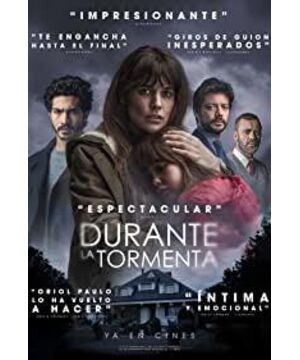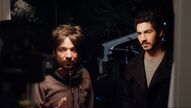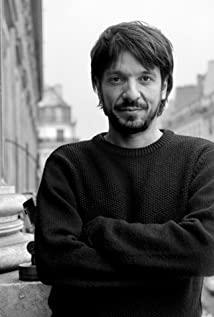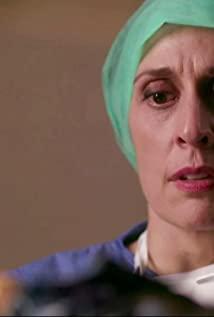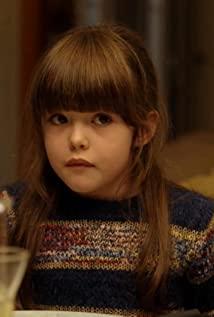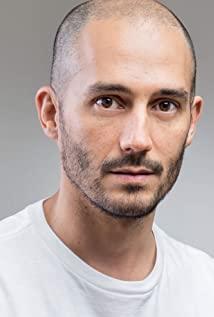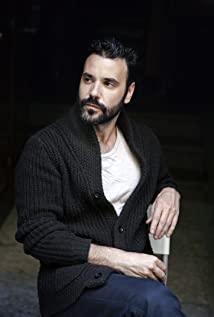Although there are bugs in the timeline, this is the correct way to open the "Rebirth".
After watching "The Invisible Guest", watch this "Mirage" again. I would like to use "pancake spread" to describe the Spanish director's cinematic approach. - He really likes full reversals.
However, in "The Invisible Guest", since there is no "dislocation of time and space" involved, and there are many reversals, it is actually just the hypocritical sophistry of the male protagonist, so the logic perfectly echoes.
When it comes to "Mirage", the situation becomes more complicated. I admit that the rhythm of this one is better than the previous one, the plot is compact, and there is no urine point in the whole process. But the messy timeline has created a lot of bugs. When watching a movie, due to the amount of information, you may not find these logically inexplicable points. But if you think about it carefully, you will find a lot of loopholes. Some loopholes, corresponding to the front and back, can be filled, and some are more and more widened.
For me personally, watching this movie is like "spreading pancakes". The overall look has flipped several times.
event theory
On a certain thunderstorm night, lightning strikes the same TV in two different time and space, and the people in front of the TV can talk to each other. There is no scientific explanation given in this set-up film. Um! It does not matter. This is just a setting.
Because of this setting, the heroine saved a little boy who lived in 1989. And when this little boy grew up, in order not to destroy the complete life of the heroine, he turned on the TV again on the night of thunderstorms. The entire film has two flips, three parallel "spacetimes".
Here's another unexplained paranormal setting. That is, no matter how the time turns, the heroine will carry the previous memories. In the second time and space, the missing pieces of her life can also be retrieved through physical contact with people.
British female writer Agatha Christie wrote a detective novel called "Towards the Decisive Moment" in which she wrote:
"Here's it! When you see reports of murders—or, for example, when you read a novel about murders, you usually see the murders first. It's all wrong. The murders were a long time ago. It has already begun. A murder is the culmination of many different situations, all coming together in a certain place at a certain moment.”
An event is caused by many factors, and the effects after the event spread out like light waves and continue to ferment.
grass snake grey line
1. The heroine was a nurse before the first flip. After an operation, she proudly said to the surgeon, "If she hadn't given up neurosurgery, she would have performed this operation now." In the conversation with her colleagues, it can be seen that she gave up her education for her daughter, but she did not Regret.
In the later story line, because she failed to meet her husband before the first flip and had no daughter, she really became the chief surgeon. And her daughter's name was the name of her last patient.
2. On the night of the first time and space staggered, the heroine dug out a pack of matches with the hotel logo in her husband's jeans pocket. Her husband reacted oddly at the time, claiming that the box of matches came from a hotel in Seville. It turned out that it was actually a local hotel, and that man, no matter who he married, would not be single-minded.
3. Shortly after the beginning of the film, the close-up is given to the neck of the heroine's husband, where there is a scar. After the first flip, the heroine was told that the husband she was talking about was in fact just one of his patients, who had undergone surgery on her. This echoes the scars that appeared before.
Timeline
1. On a thunderstorm night, the heroine found that an old TV in her home could be connected to the same day in 1989. She took advantage of this to save Nick, a young boy who was supposed to run into a neighbor killing his wife on this day and was hit by a car while evading.
In order to make the little boy believe in herself, she tells him that she "knows his friend". And told about the process of acquaintance with Nick's friend, that is, the captain. (Meet at the train station) But no specific time is specified. (Normal people don't remember so clearly.)
It also made Nick growing up waiting for her at what she said was the station and faking a chance encounter.
As the original protagonist of Encounter Time, the captain also appeared in this scene. However, he was intercepted by his childhood friend. I can only stand on the side sadly, leaning against the pillar to read the newspaper.
2. The heroine checked the confession of the "wife murderer" before the first thunderstorm night, and knew his expected burial location (slaughterhouse).
After saving Nick in the thunderstorm night, the little boy did not die, so the conspiracy of the neighbors to kill his wife and divide his body was not revealed. The bodies were buried in the slaughterhouse as originally planned. Because in the setting, the heroine's memory is coherent, so she can accurately say the location of the burial. This is something that even Nick, who has witnessed the dismemberment of the body and became a police officer, cannot do this for many years.
bug in timeline
The timeline of the story makes sense without going too far, but there are a few little things that make me pick out.
The heroine talks to Nick, a young boy living in 1989, through an old TV on a thunderstorm night. When she woke up the next day, she found that the operation performed two days ago needed to be carried out, and she herself was the chief surgeon. In other words, the time has come back two days.
Well, in this timeline, the thunderstorm night never happened, and the heroine never talked to the little boy. Based on this assumption:
Nick should also never see the heroine on TV.
↓
Then Nick, who didn't get a hint, should have died on the night of the thunderstorm.
↓
If Nick dies, waiting at the station for years and pretending to meet by chance doesn't work.
↓
The heroine's life will not be rewritten, and she will still turn on the TV on the night of thunderstorms.
In this way, a "closed loop" that cannot be explained before and after is formed. Suffice to say, the story that flipped after the first thunderstorm night was unjustifiable.
A second flip that follows might provide a suitable complement to the first. The heroine chose to "suicide" in order to get her daughter back (she was forcing Nick), and then Nick turned on the old TV again and communicated with his past self.
"What did he say to his past self?" No explicit instructions are given in the film. It's obvious that he didn't go looking for the heroine, faked a chance encounter, or even didn't know her at all. (did not see her on tv)
So, who saved Nick on that stormy night? himself?
This is again in a vicious circle of chicken or egg. (Well, whether it's the pre-existing chicken or the existing egg, this director just wants to spread pancakes.)
Not surprisingly
In addition to the problems on the timeline, as a few too obvious hints in the suspense movie, the subsequent reveal lost its sense of surprise. This is not a big problem, just a little "craftsmanship".
1. When Nick's mother left the house, his close friend, the mother of the later captain, parked the car on the side of the road and looked flustered. From that moment, you can probably guess that the neighbor's murder is related to her.
2. The heroine found that the time and space were changed, the daughter was never born, and the husband belonged to someone else. Everyone around thought she was crazy. Only one policeman believed him. The policeman was the little boy she had rescued, which was quite obvious.
pay tribute
It is also suspenseful. The director of "Mirage" should be a fan of Hitchcock. There are many scenes in the film that pay tribute to Xifa.
1. The heroine loses her identity and has double memories. The plot is very similar to "Dr. Edward".
2. The rotating steps in the film are reminiscent of Vertigo.
3. The clip of Nick finding the body and watching the dismemberment is very "Crystal".
4. The neighbor killed his wife, and the dog that kept barking, has the shadow of "Rear Window".
4. The wallpaper of the "wife murderer" home is different from the traditional wallpaper, like a painting. I studied it carefully. Probably Rousseau's work.
Judging from the distribution of flowers, the wallpaper behind "The Murderer" should be this one. ↓↓↓
The complete picture indicates a murder. ↓↓↓
summary
Overall, the viewing experience of this movie is pretty good. The logic of the heroine's thinking after her rebirth is much more "reasonable" than ordinary online cool articles. After all, the memory of the past is also warm. Even if you have a handsome and loyal boyfriend after rebirth, and a successful career, it is impossible to just accept it. What's more, there is a daughter, no one would be reluctant to have a daughter who is old enough to play soy sauce. (Of course, at the end, I still think she is too greedy, the daughter also wants it, and the handsome guy doesn't want to lose it.)
It can be said that although there is an unexplainable logic in the timeline of this movie. But the emotional line is very correct. After watching this film, I have to rethink the meaning of the texts of "travelling" and "rebirth".
For an adult, no matter where I traveled or reborn, spending 128 minutes (the length of Mirage) trying to return to normal life is the correct way to open.
View more about Mirage reviews


